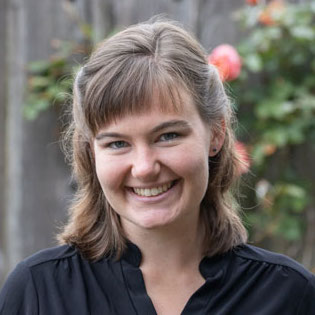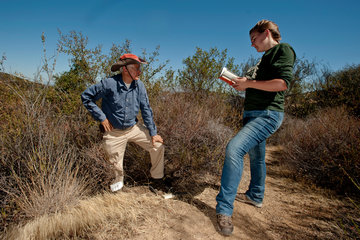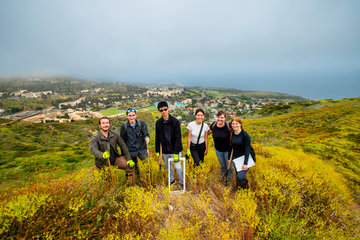Seaver College Professor Helen Holmlund Earns NSF Grant to Study Ferns on Four Different Continents

Helen Holmlund discovered her vocation trekking through the Santa Monica Mountains as a summer undergraduate research student at Pepperdine University.

“I interacted with practicing scientists for the first time in college. Before then, I didn't know what research was or how it worked,” she explains. “Pepperdine accepted me into the plant biology lab, and I was hooked from day one. We went out crawling through the bushes, and it was so fun to get to ask questions, test hypotheses, and design experiments out in nature.”
Following this initial spark of passion, Holmlund is now poised to give a new generation of undergraduates a similar immersive experience with plants. The assistant professor of biology just earned a $500,999 National Science Foundation (NSF) grant that will allow her and Seaver College students to study drought-tolerant ferns on four different continents.
Drought-tolerant ferns could help provide insight into the diverse strategies that plants use to survive drought. Ferns are the second-most diverse type of vascular plants with ~12,000 different species worldwide. Research on plant drought tolerance, however, has historically neglected ferns—a shocking fact considering the ability of some ferns to survive in water-scarce environments.
As Holmlund has learned, ferns in the Santa Monica Mountains survive on very little moisture. This is surprising because vascular plants need water for essential processes such as photosynthesis—a biological function that creates chemical energy and oxygen vital to survival. Rather than dying during drought, some Southern California ferns are desiccation-tolerant “resurrection” ferns, meaning they dehydrate their tissues to less than 10 percent water. Upon rehydration, they are able to recover full functionality.
The quest of Holmlund’s NSF research venture is to better determine how these resurrection ferns can function after near-complete desiccation. These discoveries could improve our understanding of how various plants survive prolonged drought.
“It's really important to see how these resurrection ferns can handle climate change,” says Holmlund. “More broadly, it’s important to understand how they handle environmental stressors because they are key players in the ecosystem. We must learn more about their limits of survival.”

To discover more about the limits of a fern’s survival, Holmlund will compare six different families of resurrection plants found all over the world. This process will carry the Seaver College professor and her research students from Malibu’s sunny shores to Texas, North Carolina, Puerto Rico, Costa Rica, Australia, New Zealand, Argentina and Switzerland. At each of these stops, the research team will be in the field conducting anatomical and physiological analyses of resurrection ferns and their close relatives.
Pepperdine’s expansive international presence allows Holmlund and her students to take a global approach. During the trips abroad, the research team will leverage two of the University’s international campuses and engage their resources to support the research. Beyond granting the project greater access to specimens, Holmlund believes this unique facet of the project will engage more undergraduate researchers and provide in-class research opportunities for students participating in International Programs.
“I view the students as collaborators in the project and scientists in their own right,” she says. “The NSF grant will open opportunities for student research at home and abroad. I hope that the students who work on the project get inspired and that it helps them in their own search for a vocation.”